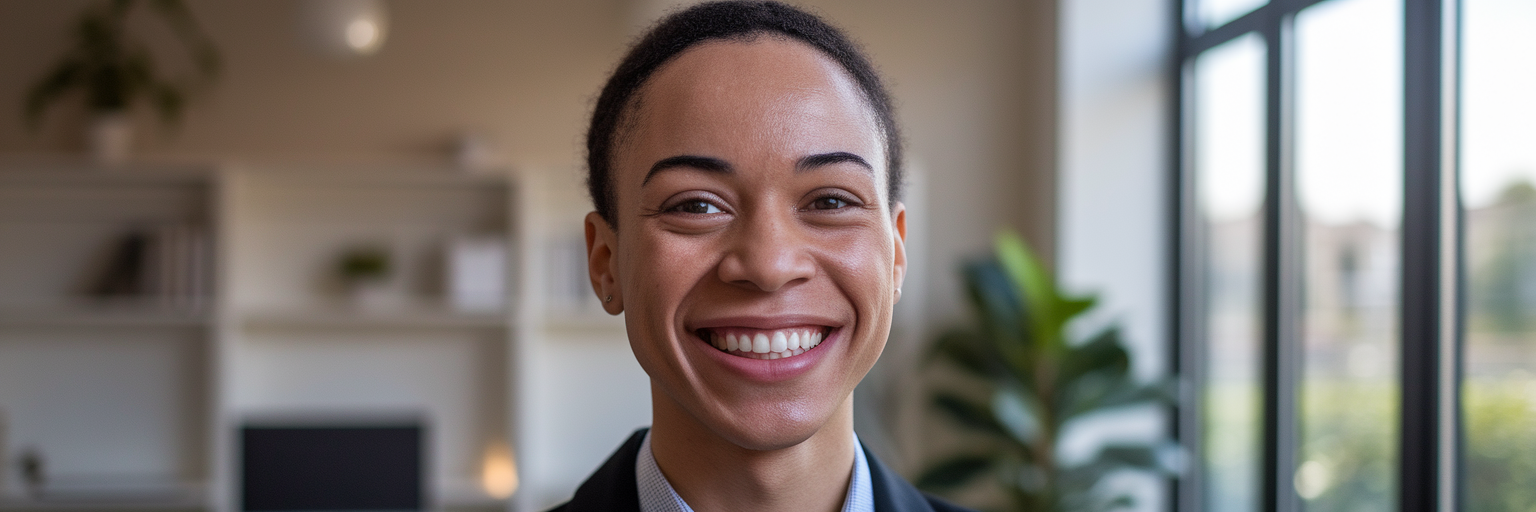The Trust Gap in Remote Communication
When we work remotely, we lose the subtle cues of in-person interaction. The handshake, the shared glance across a meeting table, the casual chat by the coffee machine, all these small moments build rapport. Without them, a digital trust deficit can emerge. This isn't a minor inconvenience. According to research highlighted by Harvard Business Review, a lack of mutual trust is a primary obstacle to effective collaboration in virtual teams. Professional relationships built on text and scheduled calls can feel impersonal and distant.
We have all felt it, that slight hesitation before reaching out to a colleague we only know as a name in a chat window. This gap in connection can slow down projects and create misunderstandings. The central challenge for any remote professional becomes how to build trust online when the traditional tools for doing so are gone. It starts with reintroducing the human element back into our digital workspaces, making ourselves more than just a name and an email address.
Your Headshot as a Digital Handshake

With the physical handshake gone, your professional headshot steps in to fill its role. Think of it as your digital handshake, the first point of human connection in a virtual environment. It is the visual cue that transforms your name on a screen into a real, relatable person. This simple addition has a profound psychological impact, reducing the perceived distance between colleagues and making digital interactions feel more personal and grounded.
A study published in the Journal of Business and Psychology found that the quality of a profile picture directly influences how viewers perceive an individual's trustworthiness and warmth. A clear, professional photo signals that you are credible and engaged. This is how you begin to improve your professional online presence, not with a long bio, but with a single, powerful image. It communicates that you are an approachable and competent professional before you even type a single word. This is especially critical for your LinkedIn profile, which often serves as your primary professional identity online. A strong photo can significantly impact how you are perceived by recruiters and peers, making it essential to get your LinkedIn profile picture right.
Balancing Professionalism with Approachability
An effective headshot for a remote worker walks a fine line. It must project professionalism to convey competence and reliability, yet it also needs to communicate approachability to encourage collaboration. Why is this balance so important? In an office, your work ethic and your friendly demeanor are demonstrated daily. Remotely, your headshot has to do much of that work for you. An overly formal photo can make you seem distant, while a casual selfie can undermine your credibility.
Professionalism is communicated through appropriate attire and a clean background, signaling that you take your role seriously. Approachability comes from your expression, a genuine smile that suggests you are open and easy to work with. Striking this balance means being aware of the common professional headshot mistakes to avoid, which can inadvertently send the wrong message. The goal is to look like someone who is both an expert in their field and a great team player. To make this clearer, consider the differences in how a photo can be perceived.
| Attribute | Overly Formal | Ideal Balance | Overly Casual |
|---|---|---|---|
| Expression | Stern, unsmiling, intense | Warm, genuine smile, confident | Forced grin, silly face, distracted |
| Attire | Stiff suit and tie, black-tie wear | Smart-casual, business-appropriate top | T-shirt with logos, hoodie, beachwear |
| Background | Generic corporate stock photo, severe office | Neutral wall, subtly blurred home office | Busy room, vacation photo, cluttered space |
| Overall Impression | Distant, intimidating, unapproachable | Credible, friendly, trustworthy | Unprofessional, not serious, inexperienced |
This table illustrates how different elements contribute to the overall tone of a headshot. The goal is to combine professionalism with warmth to build trust effectively in a remote setting.
Practical Steps for an Effective Remote Work Headshot

Creating a headshot that strikes the right balance is more straightforward than it sounds. By focusing on a few key elements, you can produce an image that builds trust and enhances your professional reputation. Here are some actionable, approachable professional headshot tips to guide you.
1. Master Your Expression
Your expression is the most important tool for conveying approachability. Aim for a genuine, warm smile that reaches your eyes. It communicates confidence and openness. Practice in a mirror to find a natural look that feels authentic to you. Avoid a forced grin or an overly serious stare, which can appear insincere or intimidating.
2. Choose Your Attire Wisely
Your clothing should align with your industry's norms while reflecting a professional image. Smart-casual attire, such as a collared shirt, a blouse, or a blazer, works well for most fields. Stick to solid, neutral colors that complement your skin tone and avoid busy patterns or large logos that can be distracting.
3. Select the Right Background
The background should be simple and uncluttered so the focus remains on you. A solid, neutral-colored wall is an excellent choice. A subtly blurred home office can also work, as it adds a touch of authentic context for professional headshots for remote workers without creating visual noise.
4. Find Flattering Light
Good lighting is non-negotiable. Soft, natural light is the most flattering, so position yourself facing a window. This illuminates your face evenly and eliminates harsh shadows that can undermine the quality of your photo. Poor lighting can make an image look unprofessional, no matter how great your smile is. For those looking to apply these principles, here is a detailed guide on how to take perfect LinkedIn headshots at home.
Maintaining Visual Consistency Across Platforms
Once you have the perfect headshot, its power is multiplied through consistency. Using the same professional photo across all your digital platforms, from LinkedIn and your company directory to your email and Slack profile, reinforces the trust you have worked to build. When colleagues, clients, and recruiters see the same friendly and professional face everywhere, it creates a sense of familiarity and strengthens your digital identity. This consistency is a cornerstone of virtual team trust building.
Think of it as part of your professional uniform in a distributed world. To keep your image authentic, make it a practice to update your headshot every one to two years, or whenever your appearance changes significantly. This is not about vanity, it is about ensuring your digital handshake remains a true reflection of who you are. A consistent headshot is a cornerstone of your professional identity, which you can further define with a clear personal brand statement. For organizations, ensuring this consistency across all employees can be achieved with enterprise solutions that streamline headshot creation and management.


